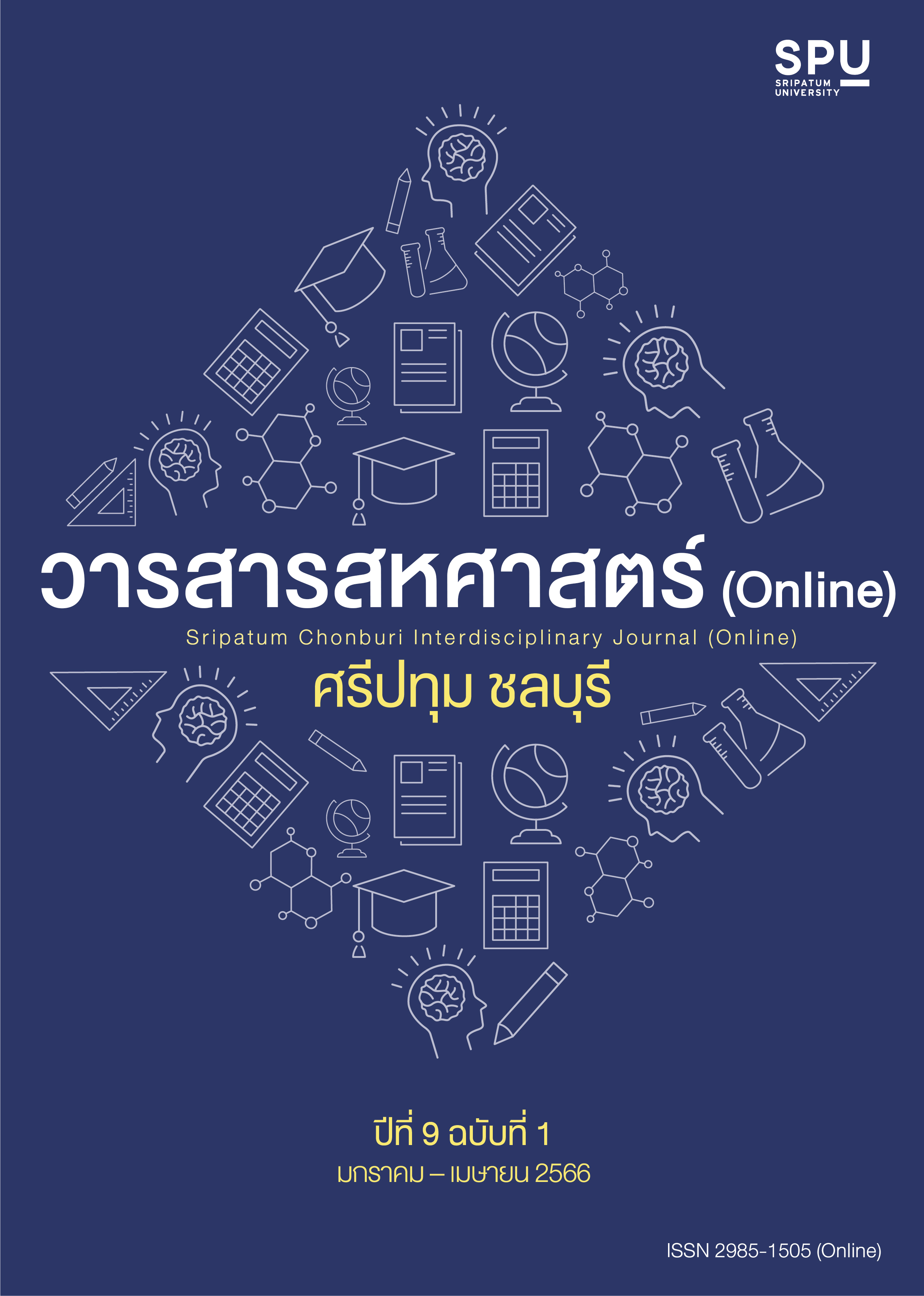The Moderating Effect Of Leader Member Exchange On The Relationship Between Role And Intertion To Quit
Keywords:
Role Conflict, Role Ambiguity, Leader Member Exchange, Intention to QuitAbstract
This study is a quantitative research which aims to examine three main subjects. The objectives are to study; 1) the level of role conflict, role ambiguity, leader member exchange and intention to quit; 2) the correlation between role conflict, role ambiguity, leader member exchange and intention to quit; and 3) the Moderating Effect of Leader Member Exchange- tested within the relationship between role and intention to quit.
The sample consisted of 382 employees in support functions in a commercial bank who provided data by filling in a 48-item research questionnaires. The statistical tools used in this study were descriptive statistics and regression analysis including percentage, mean, standard deviation, multiple regression and hierarchical multiple regression analysis.
The results of this research can be summarized as follows; 1) role conflict correlates positively with intention to quit 2) role ambiguity correlates positively with intention to quit, 3) leader member exchange correlates negatively with intention to quit 4) leader member exchange moderates the relationship between role conflict and intention to quit and 5) leader member exchange moderates the relationship between role ambiguity and intention to quit.
References
Aloysius, S. M. (2017). The relationship between conflict and intention to quit. International
Journal of Engineering Technologies and Management Research, 4(7), pp. 1-13.
Bhatti, G. A., Islam, T., Mirza, H. H., & Ali, F. H. (2015). The relationships between LMX, job
satisfaction and turnover intention. Science International, 27(2), pp. 1253-1526.
Clercq, D. D., & Belausteguigoitia, I. (2017). Reducing the harmful effect of role ambiguity on
turnover intentions: The roles of innovative propensity, goodwill trust, and procedural
justice. Personnel Review, 46(6), pp. 1046-1070.
Cooper, C. L., & Marshall, J. (1976). Occupational sources of stress: A review of the literature
relating to coronary heart disease and mental ill health. Journal of Occupational
Psychology, 49(1), pp. 11-28.
Davis, K. & John W. Vewstrom. (1989). Human behavior at work organizational psychology.
(8th ed.). NY: McGraw-Hill.
Duchon, D., Green, S. G., & Taber, T. D. (1986). Vertical dyad linkage: A longitudinal assessment
of antecedents, measures, and consequences. Journal of Applied Psychology, 71(1),
pp. 56-60.
Gara Bach Ouerdian, E., Mansour, N., Gaha, K., & Gattoussi, M. (2021). Linking emotional
intelligence to turnover intention: LMX and affective organizational commitment as
serial mediators. Leadership & Organization Development Journal, 42(8),
pp. 1206-1221.
Gracious’cious, J., & Fouziya, R. (2018). Role conflict, role overload and intention to quit
the job among women it professionals in kerala. OPUS : HR Journal, 9(2), pp. 1-12.
Graen, G. B., Liden, R. C. & Hoel, W. (1982). Role of leadership in the employee withdrawal
process. Journal of applied psychology, 67(6), pp. 868-872.
Greenberg, J. & Baron, R. A. (1997). Behavior in organizations (6th ed.). Upper Saddle River,
NJ: Prentice Hall.
Han G.H. & Jekel M. (2011). The mediating role of job satisfaction between leader-member
exchange and turnover intentions. Journal of Nursing Management, 19(1), pp. 41-49.
Hardy, M. E., & Conway, M. E. (1988). Role Theory: Perspectives for Health Professionals
Subsequent (2nd ed.). CT: Appleton & Lange.
Harris, K. J., Harris, R. B., & Eplion, D. M. (2007). Personality, leader-member exchanges, and
work outcomes. Journal of Behavioral and Applied Management, 8(2),
pp. 92-107.
Hoover, J. (2009). A common word: 'More positive and open, yet mainstream and orthodox'.
Theological Review, 30(1). pp. 50-77.
Jackson, S. E., & Schuler, R. S. (1985). A meta-analysis and conceptual critique of research
onrole ambiguity and role conflict in work settings. Organizational Behavior and
Human Decision Processes, 36(1), pp. 16-78.
Kahn, R. L., Wolfe, D. M., Quinn, R. P., Snoek, J. D., & Rosenthal, R. A. (1964).
Organizational stress: Studies in role conflict and ambiguity. NY: John Wiley.
Karatepe, O. M., & Uludag, O. (2008). Affectivity, conflicts in the work-family interface, and
hotel employee outcomes. International Journal of Hospitality Management,
(1), pp. 30-41.
Khorakian, A., Nosrati, S. & Eslami, G. (2018). Conflict at work, job embeddedness, and their
effects on intention to quit among women employed in travel agencies: Evidence
from a religious city in a developing country. International Journal of Tourism
Research, 20(2), pp. 215-224.
Kim, S., & Wright, B. E. (2007). IT employee work exhaustion: toward an integrated model of
antecedents and consequences. Review of Public Personnel Administration, 27(2),
pp. 147-170.
Ku, M. (2007). An examination of work-family conflict and intention to leave among
college and university foodservice managers. The Degree of Doctor of Philosophy
Master of Science in Hospitality Administration, Graduate Oklahoma State University.
Liden, R. C., & Maslyn, J. M. (1998). Multidimensionality of leader-member exchange: An
empirical assessment through scale development. Journal of Management, 24(1),
pp. 43-72.
Marom, M., & Koslowsky, M. (2013). The effects of role stressors, work-related hassles, and
critical job events on mental health over time: A study of new employees.
International Journal of Psychological Studies, 5(3), pp. 108-121.
Mobley, W. H. (1982). Employee turnover, causes, consequences, and control.
NY: Addision Wesley Publishing Company.
Moorhead. G. & Griffin. R.W. (2001). Organizational behavior: Managing people and
organizations. Boston: Houghton Miffin Co.
Ozdevecioglu, M., Demirtas, O. & Kurt, T. (2015). The effect of leader-member exchange on
turnover intention and organizational citizenship behavior: the mediating role of
meaningful work. In Proceedings of the 9th international management conference.
Bucharest, Romania. pp. 710-719.
Purnawati, N. L. G. P., Adhika, I. N. R., & Yuliastuti, I. A. N. (2020). The impact of work family
conflict, role conflict, and burnout on intention to quit of female employees.
Asia Pacific Journal of Management and Education (APJME), 3(1), pp. 94-101



